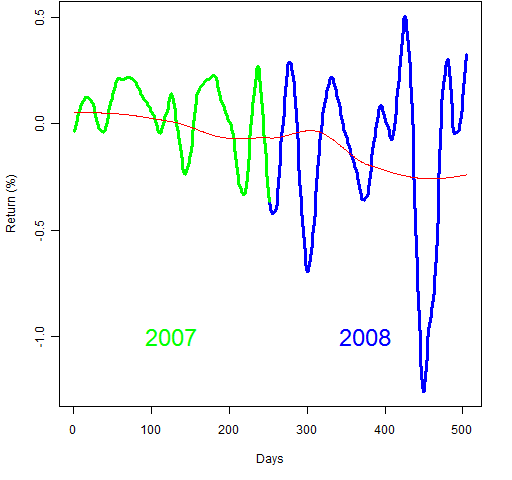A new benchmark model for estimating expected stock returns
Post on: 7 Апрель, 2015 No Comment

The Review of Financial Studies
The Review of Financial Studies is a major forum for the promotion and wide dissemination of significant new research in financial economics. As reflected by its broadly based editorial board, RFS balances theoretical and empirical contributions.
For investors and asset managers, expected stock returns are the rates of return over a period of time in the future that they require to earn in exchange for holding the stocks today. Expected returns are a central input in their decision process of allocating wealth across stocks, and are essential in determining their welfare. For corporate managers, expected returns on the stocks of their companies, or the costs of equity, are the rates of returns over a period of time in the future that their shareholders require to earn in exchange for injecting equity to their companies today. The costs of equity play a key role in the decision process of corporate managers when deciding which investment projects to take and how to finance the investment. Despite the paramount importance, no consensus exists on how to best estimate expected stock returns. In fact, one of the most important challenges in academic finance is to explain anomalies, empirical patterns of expected stock returns that seem to evade traditional theories.
A manager should optimally keep investing until the investment costs today equal the value of future investment benefits discounted to today’s dollar terms, using her firm’s expected stock return as the discount rate. This economic logic implies that all else equal, stocks of firms with high investment should have lower discount rates than stocks with low investment. Intuitively, low discount rates lead to high discounted values of new projects and high investment. In addition, stocks with high profitability (investment benefits) relative to low investment should have higher discount rates than stocks with low profitability. Intuitively, the high discount rates are necessary to offset the high profitability to induce low discounted values for new projects and low investment.
Forex stock exchanges, by Allan Ajifo. CC-BY-2.0 via Wikimedia Commons .
To implement this idea, we use a standard technique in academic finance that “explains” a stock’s return with the contemporaneous returns on a number of factors. In a highly influential study, Fama and French (1993) specify three factors: the return spread between the overall stock market and the one-month Treasury bill, the return spread between small market cap and big market cap stocks, and the return spread between stocks with high accounting relative to market value of equity and stocks with low accounting relative to market value of equity. Carhart (1997) forms a four-factor model by augmenting the Fama-French model with the return spread between stocks with high prior six to twelve month returns and stocks with low prior six to twelve month returns.
We propose a new four-factor model. dubbed the q -factor model, which includes the market factor, a size factor, an investment factor, and a profitability factor. The market and size (market cap) factors are basically the same as before. The investment factor is the return spread between stocks with low investment and stocks with high investment. The profitability factor is the return spread between stocks with high profitability and stocks with low profitability. The q -factor model captures most of the anomalies that prove challenging for the Fama-French and Carhart models in the data.
Specifically, during the period from January 1972 to December 2012, the investment factor earns an average return of 0.45% per month, and the profitability factor earns 0.58%. The Fama-French and Carhart models cannot capture our factor returns, but the q -factor model can capture the returns on the Fama-French and Carhart factors. More important, the q -factor model outperforms the Fama-French and Carhart models in “explaining” a comprehensive set of 35 significant anomalies in the US stock returns. The average magnitude of the unexplained returns is on average 0.20% per month in the q -factor model, which is lower than 0.55% in the Fama-French model and 0.33% in the Carhart model. The number of unexplained anomalies is 5 in the q -factor model, which is lower than 27 in the Fama-French model and 19 in the Carhart model. The q -factor model’s performance, combined with its economic intuition, suggests that it can serve as a new benchmark for estimating expected stock returns.
Kewei Hou is Associate Professor of Finance at The Ohio State University, Chen Xue is Assistant Professor of Finance at University of Cincinnati, and Lu Zhang is Dean’s Distinguished Chair in Finance and Professor of Finance at The Ohio State University. Hou, Xue, and Zhang are authors of the paper “Digesting Anomalies: An Investment Approach ” forthcoming in Review of Financial Studies .














